Jason Doyle seeks some clay shooting tips from some of the clay shooting world’s finest
Recognize your flaws, seek a solution, and find a way to implement improvements
Clay shooting tips are always valuable when it comes to continuously enhancing one’s shooting, then to maintain that level has to be one of the hardest things to achieve in the sport. No matter what your standard, there are always ways for most of us to develop.
The move from ‘hobby’ to competitive shooting can be a daunting process – the extensive number of disciplines alone can be confusing for someone who isn’t familiar with the competitive side of the sport.
Then there are rules, regulations and procedures that need to be learned – these differ hugely between the disciplines.
There are several top competitors in various disciplines and some of the top coaches in the country to build up a list of tips and techniques to help shooters of all varieties improve their scores.
Let’s get started.
Table of Contents
Mike Yardley’s top clay shooting tips
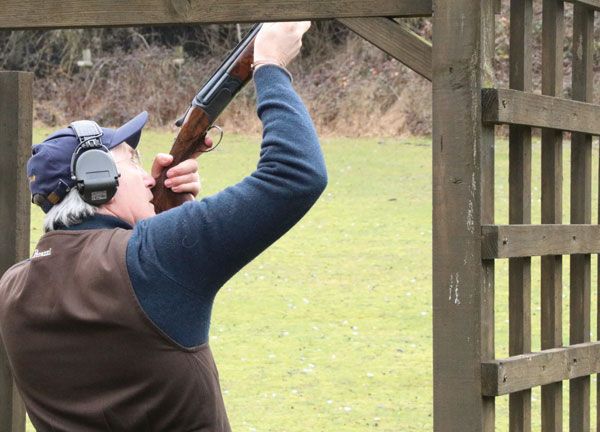
Determining your eye dominance will dictate whether you shoot with one or both eyes open. This, in turn, influences many other aspects of your technique
Goals
Decide what you want from your shooting – set yourself goals and aim for them. For some it may be to hit 50 out of 100, for others it could be to qualify for a national team. Make a plan on how you intend to reach these goals, and once you reach them, make new ones.
Theory
Learn the theory of shooting technique. Much has been written by many on this subject but something can be learned from everyone. Books like Clay Pigeon Marksmanship by Percy Stanbury contain information that can help almost every shooter improve.
Coaching
Lessons with a coach you trust are essential – preferably one who can see the shot and has a non-dogmatic approach to the job. Money spent on quality coaching is some of the best money you can spend as a novice. Don’t be too proud to have lessons – some of the best shots in the world have regular coaching to help them keep at that level.
Eye dominance
Have your eyes tested for dominance – it’s a hugely important factor that will affect your shooting. Any issues here will have a massive effect down-range. There are several degrees of eye dominance – six, in fact – and making sure you know which eye is in charge will greatly aid your shooting. A coach should use a combination of pointing and circle methods to determine eye dominance.
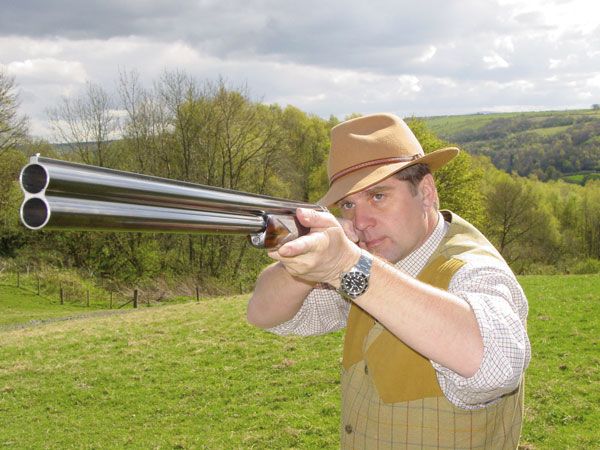
Mike Yardley’s advice is based on more than 30 years of experience.
Gun fit
Once you have developed a shooting technique and had your eye dominance tested, having your gun properly fitted is vital. Nothing is as important as proper fit but a shooting technique , perfect gun & good quality calibers must be in place before this can be achieved. Any irregularities in mount will result in inaccurate measurements being taken, annulling the benefit of the process.
Gun fitting is a complex process and affects more than just where the shot will go – it will affect felt recoil and gun stability. This means several factors need to be addressed, such as weight, balance and trigger pulls. For me, a
a gun that shoots 60/40 is about right for Skeet and Sporting. Something a little higher is ideal for Trap. Stocks that are too low often cause eye dominance issues for those who shoot with both eyes open.
Compete
The best practice is competition. Shooting Skeet or DTL is a great place to start as there are fewer variables to consider and one can concentrate on developing technique and mental discipline. It’s important to shoot with people you can relax with. If possible, shoot with people who are better than you as this will encourage you to lift your game and help your improvement.
Nerves
Most people will feel nervous before and during a competition. It is important not to fight nervous energy – doing so will distract and tire you. Allow yourself to be nervous. Once you have a system developed, your mind will be occupied by applying this system and the effects of your nerves will be minimal.

Competition experience is key. If you want to be the best, you need to compete with the best
Watch and learn
When shooting sports, make sure to watch other competitors. If possible, watch the top shots. What do they have in common? Consider the positive shooting method – preparation and performance. Watch where they hold their gun and remember where they take the targets.
Gather as much information as you can before you step into the stand. Consider the type of target – is it standard, midi or battue? Is it rising or dropping? Is it close to the ground? All these will affect how you will approach the target once it’s your turn.
Decide
Once in the stand, make your decision about how you want to kill the bird – where you see it first, where you hold your gun and where you want to break it. Set your stance towards your kill point and wind the gun back to your hold point. Remember to then cast your eyes back to your pick-up point. Three important things to remember are:
- Visual contact: stare the bird to death – really focus on the target
- Balance: your stance and technique should allow good balance at your pick up through to hold points and perfect balance at your kill point
- Rhythm: a good and consistent rhythm is essential to being consistent. A three-beat rhythm for those who shoot gun down and a two-beat for those choosing to mount the gun before calling for the bird.
Ian Coley’s top clay shooting tips
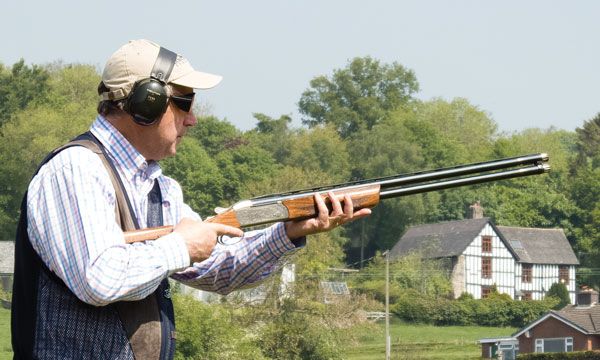
Ian Coley MBE has coached the best in the game – heed his words!
Cost
It’s important to remember that the amount of money a gun costs does not necessarily dictate how well you will perform with it. A cheap gun that fits you and is suitable for your chosen discipline is a far better option than an expensive, ill-fitting gun.
One gun?
One gun can do all but be aware that you will be compromising your performance if you shoot Trap with a Skeet gun and vice versa.
Don’t be impulsive
Don’t rush into any big buys and take advice from people you trust. Many dealers will try to sway you towards particular brands or a specific gun – they may have all the gun-fitting jargon and a great sales pitch but do not be fooled. Look at what the top guys are using. Speak to your coach and decide what will suit your needs and budget.
Does it fit?
Gun fit is essential and an oft-forgotten necessity. Newcomers should have professional lessons and achieve consistency in their gun mount before having a fitting. Some people will find an off-the-shelf model that suits them perfectly; others will need to have adjustments made. Remember that our bodies change as we age. Check your measurements every two or three years, or if your body shape changes. Gaining or losing weight has a striking effect on gun fit.
Trust
One of the best tips I can give for the continuous improvement of your scores is to use a coach you trust. They don’t necessarily need to be the best in the world but they must be someone you have confidence in and can develop a close relationship with.
Specialise
If your goal is to become successful in one discipline, I recommend you stick to that one and focus your attention on the techniques and skills needed to improve. However, it is not a bad idea to shoot alternative disciplines for pleasure. Competing at a high level is stressful and tiring, so a fun day off shooting a different discipline can be a great way to remind yourself that shooting is fun.
Consistency
Maintaining a high level relies on being consistent in every aspect of your shooting. Developing a pre-competition routine is a great help. Eating properly and avoiding alcohol the night before, getting enough sleep and being well rested and leaving home in plenty of time to avoid a stressful journey are all good tips to ensure you are at your best on the day and ready to concentrate on being consistent in your shooting.
During the shoot, it’s vital to be consistent in your approach and routine. Having a predetermined routine that you have confidence in is a great way to work through nerves and dips in form.
Soft psychology
One thing I have realized over the years of working with some of the best shots in the game is that talent will get you so far but everything needs to be ‘right’ around the shooter to achieve the very best results. When someone is as good as they can be, I do very little for the technical side of their shooting and concentrate on the mental aspect. It’s this being right that has made the difference between winning and losing.
Hannah Gibson’s top clay shooting tips
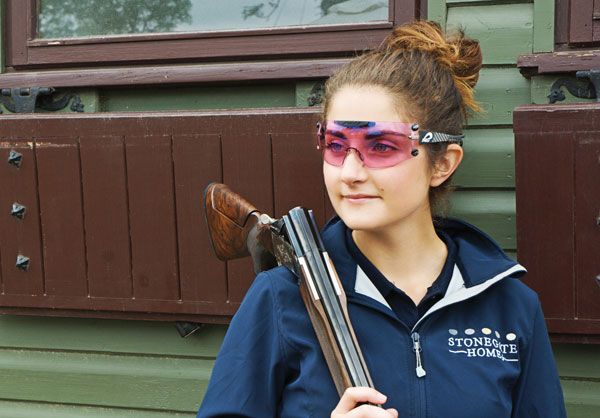
Hannah Gibson was the 2016 British Open ESP Ladies Champion
Plan
It’s important to make the most of all the information available to you and use it to your advantage. If it’s possible to observe the targets before I step into the cage, I plan how and where I want to shoot them.
Routine
Like everyone, I used to struggle with nerves, and I still do. Sticking to my routine is the best way of dealing with nervous energy. Whether I’m nervous or relaxed, my routine does not change. I watch the first pair of the shooters in front of me, adjust my feet as if I was in the stand and then look away and visualize how I want to shoot them.
Next, I watch their last pair to refresh my view. Routine in the stand is vital, too. I close my gun, barrels go to the kill point of the second target, and then to the hold point of the first. This helps me on to the second target once the first has been taken.
Breathing
Don’t underestimate the benefit of a few deep breaths. This can help settle nerves and focus the mind.
Pair lost
Missing one or both of the first pair can be quite unnerving. If this happens, I remind myself to be confident while I quickly try to work out the error. My routine affords me the time to analyze the miss. For me, my misses are usually down to my hold point, so this is what I look at changing first.
Filter
During the day, there are always lots of people willing to give advice and, while they may have the best of intentions, their comments might not always be beneficial. I feel that it’s important to learn how to filter the good information and ignore the rest as it won’t help your shooting.
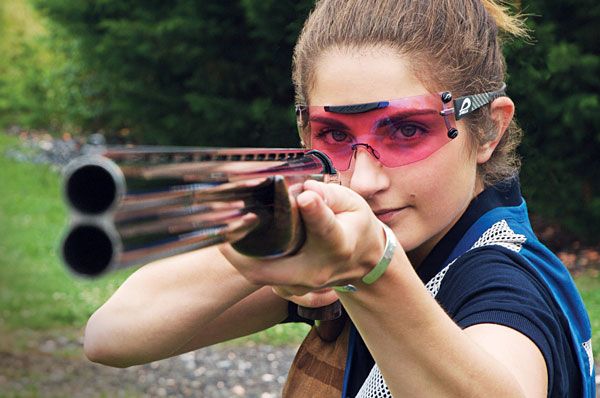
Routine in the stand will dispel nerves and encourage consistency
Ladies’ shooting
Competitive clay shooting is a massively male-dominated sport and it can be difficult for women to get involved. Unfortunately, lots of guys find it annoying that a girl can compete with and beat them. I use this as motivation to spur me on.
As lady shots, we need to focus on competing at the same level as the men.This will help improve our scores. I am not competing just to win the Ladies class – I want to beat everyone.
Support groups
There are several groups dedicated to ladies’ shooting and these provide a fantastic support network for any female shooters who want to try competition. Joining up with one of these is a brilliant and fun way to get involved with the sport.
Enjoy!
We are so lucky as shooters to have access to the top shots in the world. There are very few sports where you can go and compete against the best of the best, and we really shouldn’t take this for granted. I really enjoy watching the top shots shooting and comparing my standard to theirs on the same targets.
Derek Burnett’s top clay shooting tips
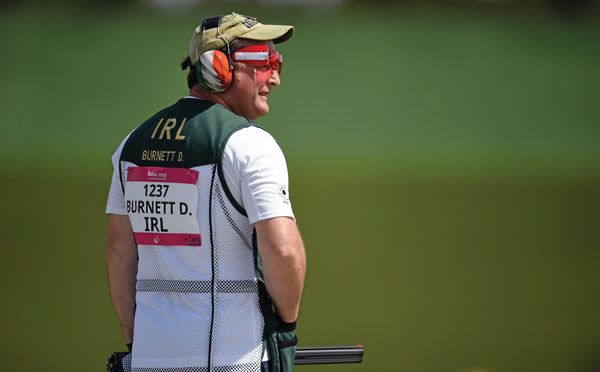
Derek Burnett is a four-time Olympic Trap shooter
Calendar
Set your goals for the year and plan the route to them. If I have a really big competition coming up, I plan my calendar as far as possible in advance. The better my planning is, the more chance I have of being in top form when I really need it.
Preparation
I train hard at the start of the season. This is a great time to iron out any gun fit issues and get some lessons on a particular bird if I’m having problems. After this, I train a lot in the month leading up to a big competition, but take the last week off to rest.
This may not be ideal for many shooters but I find it works well for me not to do an excessive amount of shooting right before an event. I know lots of top-level guys who shoot massive numbers of cartridges during their training but this is definitely the only way to achieve results.
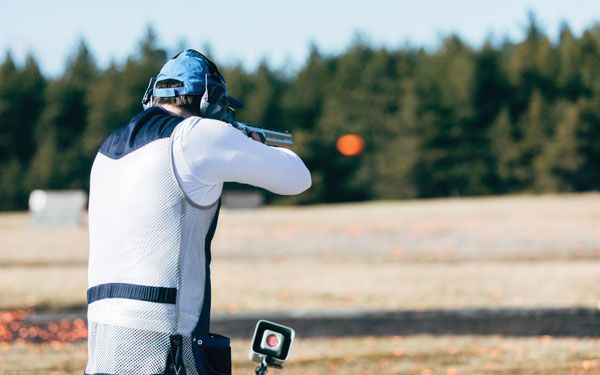
Everything in moderation – including competitions
Competitions
Competing is the best form of training – to a point. Too many big competitions and too much travel can be detrimental. I like to space my events out to avoid excessive travel and this gives me ample time for training at home.
Faith
If your preparation and planning is not going as well as you had hoped, remember to have faith in yourself and stick to the plan. Everyone has dips in form, but if you trust in your technique and keep your routine consistent, your scores will come back up. A sports psychologist can be a valuable asset, combined with a trip to your coach just to make sure everything is as
it should be.
Huw Stephens’ top clay shooting tips
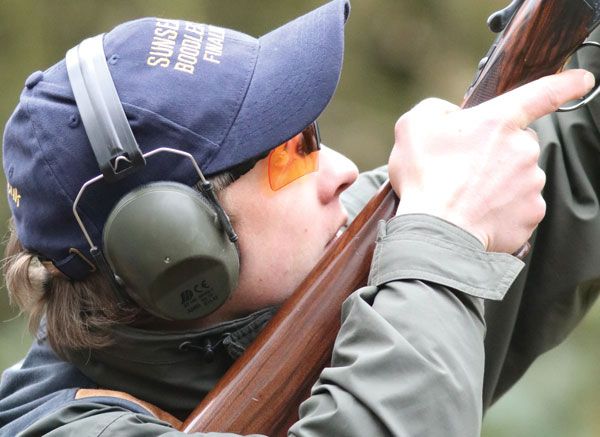
Huw made no mistake at the Sunseeker Boodles Cup
Slow, long crosser
These targets are often missed in front but they are equally frequently missed behind due to slowing down the gun. I find that the best way to kill these consistently is to stare at the bird more carefully than usual to ensure proper visual contact.
You can also shoot gun down – gun up can lead to slower movements. Some shooters also go to the bird and pull away from it as this helps prevent missing behind.
Close curling crosser
These are mostly missed in front owing to excessive gun movement caused by picking up the target too early. Moving the pick-up further out reduces rushed gun movement. Consider shooting a gun-up as it can help.
Quartering driven target
These are commonly missed off the line due to indecision. You must decide in advance whether you are going to take them as a high crosser that you move your feet around to take in line with you or a driven bird in front that you must pick up earlier, go to and then pull away from. Footwork and body position are critical.
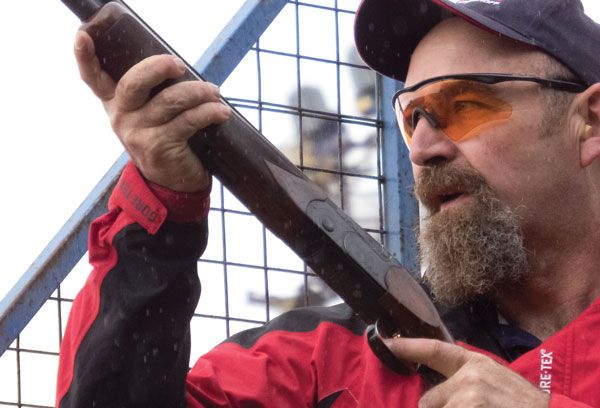
A high hold point could be the answer for springing teal
Springing teal
Teal are often missed over the top as a result of bad timing and below due to rushing. I recommend using a gun hold point that’s quite high – the top third of the flight is ideal – then the eye hold point is below the gun, in theory looking through or around the barrels. Don’t rush the shot but don’t hesitate either. Shoot them positively.
Quartering, incoming dropper
Although these look like very simple targets, they often cause problems. They can be missed over the top and easily missed off line as they transition from quartering to dropper.
Mounting too early is a common mistake with these and so I find it’s best to shoot these in the last quarter of flight. Make sure to get your feet well round to the kill point and, as with all slow targets, stare at the bird hard. Mount late, go to the bird and pull away emphasizing the downward movement.
Final Words:
Hope these tips will be helpful for you to become an expert in clay shooting.

